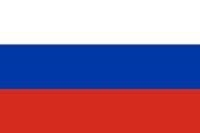
Functional coatings on the rise: shaping the future of automotive and energy sectors
2024-10-08 08:36
What are the key trends driving functional and smart coatings, and what are the most promising applications? We interviewed market researchers and industry experts to give you an idea about the status quo in the innovative segment of functional coatings. Self-cleaning, anti-microbial, anti-fouling and superhydrophobic coatings were identified as the most important types of these coatings, while the market is being driven by increasing requirements in the energy and automotive sectors. By Kirsten Wrede.

We set up an online survey and asked coatings experts, which type(s) of functional coatings they consider to be the most important, and what they see as the most promising applications in this field. Around 60 respondents completed the survey in July 2024, giving us a good idea of people’s views (Figure 1). While multiple choices were possible, 48?% of participants considered self-cleaning coatings to be the most important type of functional coatings, followed by anti-microbial (47?%), anti-fouling (40?%), superhydrophobic coatings (38?%), and self-healing coatings (36?%). Other functional coatings types mentioned were anti-ice (31?%), conductive (29?%), anti-graffiti (22?%), and colour-shifting (7?%). It was also possible to indicate other options, some of which were:
- dirt-repellent
- flame retardant
- air quality management
- abrasion / erosion protection
- enhanced UV stability
- energy management
- anti-corrosion
- photocatalytic
- self stratification
- isolation / anti-squeak
When asked about the most promising applications for functional coatings, a wide range of responses were given, from antimicrobial and corrosion protection (mentioned many times), self-healing, self-cleaning, architectural and glass coatings, anti-icing, and anti-fouling (all mentioned several times), safer traffic environment, household goods, anti-graffiti, electric vehicles, automotive sensor coatings, fire-resistant coatings, and solar-reflection coatings.
Providing additional functionality to surfaces
Calum Munro, PPG associate fellow, science and technology, comments on the key trends and challenges in the field of functional coatings: “There is currently a growing trend for coatings to provide additional functionality to surfaces – for example, our customers are increasingly interested in products that improve safety, productivity and lessen the impact on the environment.”
As Munro puts it. some functional coatings are already so ubiquitous that they are taken for granted. In his eyes, these include nonstick coatings on cookware; anti-glare and anti-fingerprint coatings on electronic device screens; anti-reflection, anti-smudge and UV light-induced darkening photochromic coatings on eyewear; anti-slip, wear-resistant and scratch-resistant coatings on wood floors, metal walkways, concrete stairs and boat decks; and anti-squeak and sound dampening coatings used inside vehicles.
“We’re helping to expand many functional coatings into new applications,” Munro adds. “For example, electrochromic coatings are expanding from self-dimming rearview mirrors to aircraft windows. The same anti-glare and anti-fingerprint coatings featured on smartphone screens, along with capacitive touch coatings that make those screens “smart” and interactive, are becoming common in applications such as passenger vehicles. Knobs, buttons, switches, gauges and dials are being replaced with screens that feature smart, functional coatings.”
Reading tip: Functional Coatings
The “EC Tech Report Functional Coatings” gives you an up-to-date bundle on automotive coatings with articles, videos and other handpicked content. In addition to technical articles about the latest technical developments, this all-in-one multi-media pack is rounded off with valuable market insights and important fundamentals about automotive coatings formulation.
Climate change, decarbonisation goals and sustainability targets
According to Munro, the company is also supporting the accelerated adoption of existing functional coatings that are now increasingly important due to climate change, decarbonisation goals and sustainability targets. Examples of these include solar thermal control coatings that help to lower the energy consumption and cost for cooling in buildings and transportation, creating cool roofs, cool walls, cool planes, cool cars, even coatings that help cool sidewalks, decks and swimming pool surroundings.
Munro also addresses a key challenge: “Some traditional nonstick, anti-fingerprint, water-shedding, anti-squeak and antifouling technologies relied on ingredients that are under regulatory pressure. This provides an opportunity for our sustainably advantaged solutions that address these concerns while still maintaining the functionality needed, and often provide additional productivity benefits to our customers.”
Regulations and Compliance are challenging
The experts from N-Tech Research agree: “Regulatory compliance and dealing with stringent environmental and safety regulations are also a challenge. Companies must balance innovation within their formulations and processes to comply with evolving standards which are continuing to evolve.” Speaking of challenges, N-Tech Research stresses that cost remains an issue for this class of coatings. “The upfront cost premiums versus more traditional solutions can impact user purchase decisions. Making the case for their use requires a clear analysis that proves out cost savings, reduction in downtimes, operational efficiencies and regulatory compliance needs.
Manufacturers produce at scale so introducing new products into the mix adds to the challenges.” The researchers identify the demand for faster innovation cycles as another significant challenge. “Creating and developing new materials and solutions is expensive and time consuming. Smart coatings is largely driven by advances in material science so testing and development is time consuming and companies wishing to provide products must have a longer-term view which does not always align with financial operations.”

The market researchers from TMR see the rise of nanocoatings as one of the key market trends for this market: “The functional coatings industry is experiencing a surge in the research and application of nanocoatings. These nano-engineered coatings possess unique properties, such as enhanced strength, scratch resistance, and UV protection. This trend is driven by the growing demand for high-performance materials across various sectors, including electronics, automotive, and aerospace.”
The researchers also consider smart coatings as trending in functional coatings: “The market for functional coatings is embracing the concept of smart coatings. These advanced coatings integrate sensors and additional functionalities, allowing them to react immediately to environmental changes. This innovation opens up exciting possibilities for anti-counterfeiting measures, self-cleaning building facades, and self-healing surfaces.”
Reading tip: Automotive Coatings
The “EC Tech Report Automotive Coatings” shows you more about a new perylene black pigment for NIR reflective coatings that support autonomous driving; find out about polyurethane systems who make the leap to the digital application technology of the future, whilst simultaneously becoming more sustainable; and gain insights into a new, automated method for rapidly and accurately measuring viscosity during coatings production. In addition to these and further articles about the latest technical developments, the Tech Report is rounded off with valuable market insights and important fundamentals about automotive coatings formulation.
Coatings with response properties
N-Tech Research agrees: “Coatings with responsive properties have become increasingly attractive to the chemical and paints and coatings sectors. Driven by top level factors such as sustainability, environmental concerns, regulatory pressures, efficiencies and cost reduction, this class of coatings are expanding their market footprint at an increasing rate.”
Asked about applications driving the market for functional coatings, Calum Munro, PPG, sees the new mobility ecosystem in particular as rich with opportunities for functional coatings. “We are in the middle of a dramatic change in the way that people and things move, underscored by the “ACES” market trends (autonomous, connected, electrified and shared), and these changes are impacting transportation, infrastructure and energy sectors that support new mobility and drive functional coatings demand.” The shift towards an electrified fleet is driving the demand for functional coatings both in the drivetrain of the vehicles and in the infrastructure that supports them.
“Various elements are driving the functional coatings market”, the TMR researchers say. “However, the key ones are increasing demand in the automotive industry for corrosion resistance, aesthetic finishes, and enhancing the durability of automotive parts, and the growing inclination towards environment-friendly packaging with barrier coatings to fight plastic waste.”
According to N-Tech Research, “within the automotive sector, smart coatings for anti-corrosion, self-healing, self-cleaning and aesthetic enhancements are most common; these coatings contribute to longer vehicle lifespans and reduced maintenance costs, making them highly valuable. With the increasing adoption of EVs and the increasing price tag for luxury vehicles and pick-ups comes demand for energy efficiency and premium features.
Outlook
“The greatest future potential for functional coatings is around energy,” Calum Munro, PPG, emphasises. He sees three areas of opportunity: clean and renewable electrical energy production; electrical energy storage and distribution; and efficient electrical energy use. “The demand for these coatings will only increase as industry demands increasingly more from coatings in support of meeting their objectives, ”the experts from N-Tech Research add. “Ongoing R&D efforts in materials science and smart coatings will create more solutions to meet market and governmental needs and directives. Sustainability, carbon reduction, product innovation, and cost reduction efforts will guarantee a demand for these coatings.”
source:european-coatings
More Hzinfo
- Recommended products:R-gen®919丨the only liquid photoinitiator commercially available for black UV systems
- R-gen® 919 is a novel photoinitiator introduced and is the only liquid photoinitiator commercially available for black UV systems.
-
2025-01-15
- Recommended products:TR 5262 Crack Resistance Fatigue Tester
- It evaluates the ability of surface coatings to resist damage caused by concrete cracking.
-
2025-01-14
- CEPE Disagrees with Decision on TiO2 Antidumping Duties
- Tariffs on Chinese imports threaten viability of many EU paint makers.
-
2025-01-14


 English
English 简体中文
简体中文 Русский
Русский إنجليزي
إنجليزي